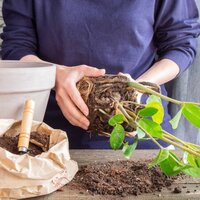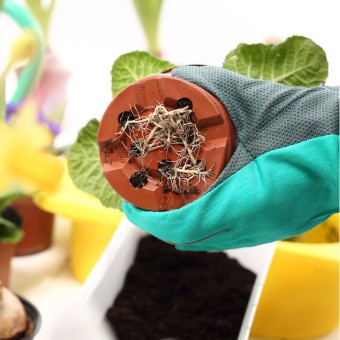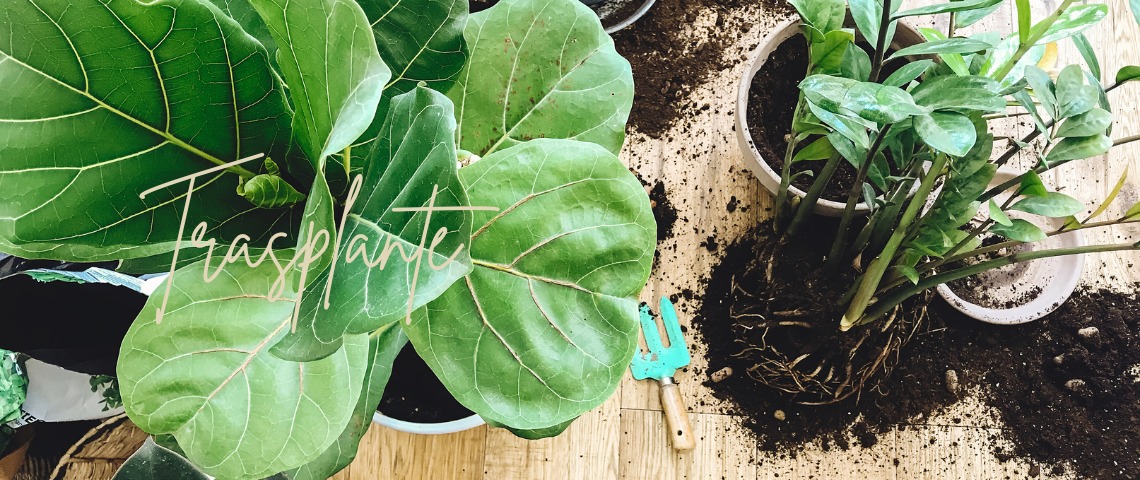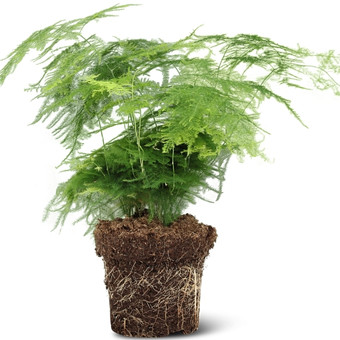-
How to transplant houseplants?

If you're considering transplanting your houseplant into a new pot because the current one has become too small, is damaged, or you're seeking a fresh design or model, this article will guide you through the correct procedure for doing so.
Many indoor plants outgrow their pots over time, requiring larger containers to accommodate their increasing size. Transplanting can seem straightforward, but it's a process that requires careful consideration to avoid any mistakes. If you're planning to transplant your houseplant into a new pot, it's essential to take note of certain key factors to ensure a successful outcome. We recommend reading on to discover the essential information you need to know about this process.

¿how to know when to repot a houseplant?
As owners of the plants we have, before informing ourselves on how to know when to transplant our houseplants, we must know our plants well in order to detect any signs that they are giving us., debemos conocer bien a nuestras plantas para así detectar alguna señal que nos esté dando.
the best period for repotting
In the vast majority of cases it is best to repot a houseplant in spring (end of February to end of June). The houseplant gets more energy during this period, due to the increased temperature and light intensity.
signs for transplantation
Some signs that we can receive from our plants for repotting are:
- Roots are coming out of holes in the pot or peeping out of the surface.
- Plant growth has stopped or slowed down.
- The substrate has deteriorated and lost its quality.
- The plant has generated a sucker and you wish to propagate the plant.
- The roots show signs of root problems.
- Pests or disease present in the substrate.
- The plant has suffered a breakage or blow that requires a transplant.

¿when to transplant a newly purchased plant?
When we bring a new plant home, the only thing we want to do is to make it feel good at home, in this attempt to make it feel good we may think that the plant would need a transplant, but in the case of a newly acquired plant, repotting is not advisable.
Bringing a new plant home is already a great stress for the plant as we are changing several factors to which the plant was used to, such as the intensity of light it received, the temperature or the humidity to which it was subjected. As a general rule, immediate transplanting is not recommended for plants that have just arrived at home. From our experience we can say that it would be best to wait about 4 weeks before repotting.
steps for repotting a houseplant

- Step 1 is to water your plant well, ideally one day before the day you plan to transplant.
- Once the day and time of transplanting has arrived, place your hand on the top of the substrate and invert the pot. Tap the bottom of the pot a few times to make the root ball slide out. If the root ball does not slide easily, it is advisable to separate the root ball from the pot by edging a knife to separate it without damaging the roots.
- Inspect the roots to make sure they are healthy.. If they are too tight, you can try to pull them apart a little without hurting them. In some cases they may need a small pruning of a few centimetres or removal of roots that are in poor condition. In this step it is also recommended to look at the substrate and remove it if it smells bad or is mouldy. If everything is fine with the roots, do not alter anything if possible.
- In this step you should have already selected a new pot for your plant, generally it is recommended that it is 20 percent larger than the diameter of the pot it was in before.
- First place a few pieces of stone in the base to improve drainage and then a good handful of compost in the bottom of the new pot, now place the root ball in the centre of the pot so that the top is a few centimetres below the rim of the pot. Next, fill the pot with more compost or fertile soil without pressing down too hard, remember you want the roots to expand easily.
- As a final step you may need to add more compost to the surface of the substrate, you can do this but don't push it all the way to the top of the pot, remember to leave some space for watering. Place the pot in a place where the excess water can drain well, once it stops dripping you can leave it in its usual place. It will not be necessary to water again until the substrate shows signs of dryness.
order your houseplant
We hope this article has been useful for you, and don't forget that on our website florespana.es you can find a wide variety of species of indoor and outdoor plants, as well as a lot of information that we offer our customers about the world of plants. If you want to buy a plant or give one as a gift, don't hesitate to visit our online shop section where you can buy plants from the comfort of your own home. We also have a shop in Valencia specialising in terrariums.
No comments found.